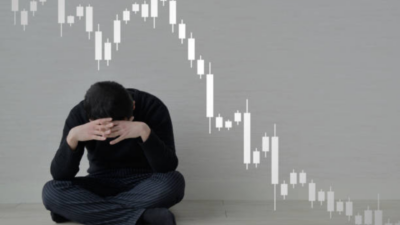‘A weird disaster’: Markets in for more churn as Fed frets inflation
Inflation might come down by itself as the macroeconomic shocks of the last three years dissipate, but that won’t necessarily stop the Federal Reserve and other central banks from trying to bring it to heel with even more tighter monetary policy.
“Last year if you recommended a 60/40 portfolio for 2023 you would have looked like a genius, and that was a fairly optimistic proposition,” says Francis Scotland, Brandywine Global’s director of macro research. “The basis for that optimism is that inflation is going to come down more than the pessimists believe and in the process we won’t have to have a hard landing.”
“But the Federal Reserve’s reaction function is that the only way to achieve that outcome is with pain. They’re focused on the unemployment rate and they’re focused on the non-rent services part of the consumer basket, and they have a very business cycle mindset to this whole expansion of the economy now.”
This isn’t a business cycle, Scotland says; it’s “not anything that can be compared to the past” as a result of unprecedented fiscal stimulus (the US deployed $5 trillion of fiscal stimulus, close to 25 per cent of GDP, and mostly financed by the Federal Reserve) and food and goods inflation stemming from the war in Ukraine and supply chain disruptions. What we’re now experiencing is normalisation after a series of man-made shocks, Scotland says, and there’s nothing predictable about it.
“Monetary policy is one of the things that got us into this mess,” Scotland says. “I wouldn’t have wanted to be a policymaker in 2020. Had the Americans not provided fiscal relief there was a good chance the US unemployment rate could have hit 30 per cent. The first wave is hard to argue with, but when the Fed sustained the stimulus was when the big error in judgement was made. Whatever was going on with inflation they made it a whole lot worse.”
“My feeling was that because this was a weird disaster inflation would gradually fall off and allow the Fed to back away from its stringency and the curve would normalise and we’d end up not too far from where we started. We went into this thing with two per cent growth and two per cent inflation. Real GDP growth has normalised but we’re still waiting for inflation fall.”
The judgement call now is whether that can be achieved without a bust. The Fed doesn’t believe so, and there’s now a real risk that they overdo it – a risk that markets are not pricing in. They’re instead pricing in a “soft landing or the shallowest of recessions imaginable” and betting that the Fed will retreat from its position of stringency even as a recession looms.
“We’ve spent nearly 12 years developing an infrastructure around zero interest rates and now we’ve had a meaningful shift upwards in interest rates. Now we’re waiting for the full fallout to take place. And what’s taking place in the banking system is not idiosyncratic; it’s systemic. When the Fed raises rates, something always breaks. What we’re seeing in the banking system are the effects of the duration shock, and that’s without the credit shock.”
“I’m an optimist in that I think inflation will fall faster than the Fed thinks it will and in that process give us an out… I think the way things are tilting right now is more in the direction of the Fed overdoing it. Which is why I think we’re in for some churn (in markets) between now and later this year. After that we start coming out of it in a more constructive manner. If we take the benign view that we’re not going to get a bust, my ‘muddle through’ scenario, then falling inflation supports the bond market and the Fed reducing its stringency basically gives us a reflationary environment which is good for risk assets, good for equities.”











